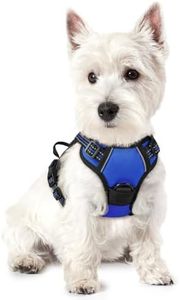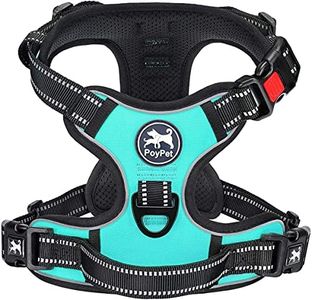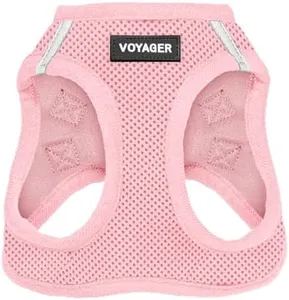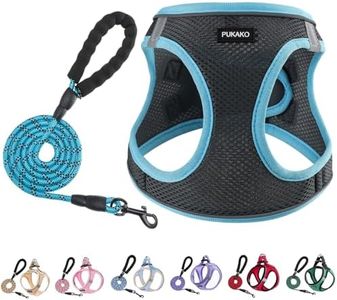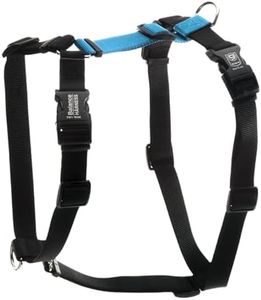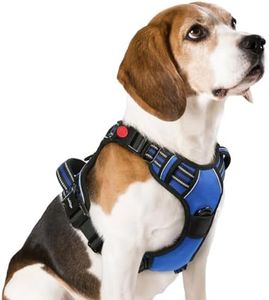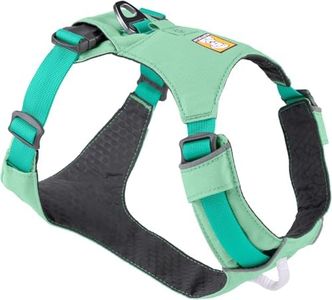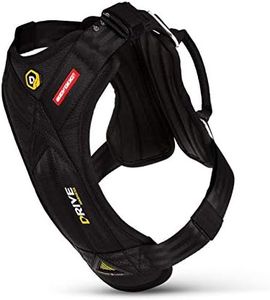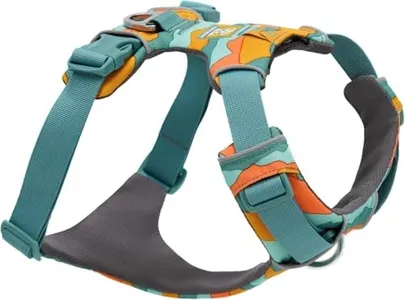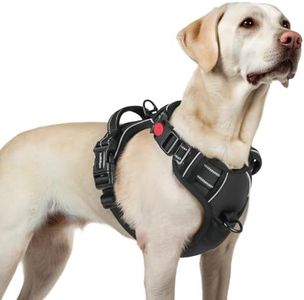We Use CookiesWe use cookies to enhance the security, performance,
functionality and for analytical and promotional activities. By continuing to browse this site you
are agreeing to our privacy policy
10 Best Harness For Dogs
From leading brands and best sellers available on the web.Buying Guide for the Best Harness For Dogs
Choosing the right dog harness is important for your pet’s comfort, safety, and your own convenience while walking or training. A harness should fit well, be suitable for your dog�’s activity level and health condition, and accommodate your walking style. It’s essential to consider your dog’s size, breed, and behavior to select a harness that provides control without restricting movement or causing discomfort.Size and AdjustabilitySize refers to how well the harness fits your dog’s body. A good fit is crucial because a harness that is too tight can chafe and restrict movement, while one that’s too loose can allow your dog to escape. Harnesses are usually adjustable to some extent, but they come in different base sizes (like small, medium, large) based on chest and neck girth. Measure your dog's chest just behind the front legs and match it with the sizing chart of the harness. Dogs with unique body shapes, such as long torsos or deep chests, may need more adjustable harnesses. Always choose a size that allows two fingers to fit between the harness and your dog, ensuring security and comfort.
Harness StyleHarnesses come in a variety of styles, such as step-in, vest, back-clip, and front-clip. The style affects how easy the harness is to put on, how much control you have, and how pressure is distributed on your dog's body. Step-in and vest harnesses are generally easy to put on and comfortable, ideal for smaller or calmer dogs. Back-clip harnesses are great for relaxed walkers, while front-clip designs help discourage pulling and give more control, making them better for training or strong pullers. Choose a style that matches your dog's temperament and your handling needs.
Material and PaddingHarness materials vary from lightweight mesh to sturdier nylon and padded options. Material choice affects comfort, durability, and suitability for different climates. Mesh and soft fabrics are good for warm weather and small breeds, but may not be as durable for active dogs. Padding provides extra comfort and helps prevent chafing, especially for dogs with sensitive skin or those who walk long distances. Select a material that’ll be comfortable for your dog’s fur and activity level, and consider padded harnesses if your dog experiences irritation with regular harnesses.
Buckles and FasteningsBuckles and fastenings keep the harness secure. They can be made of plastic or metal and may offer quick-release features for convenience. Sturdy buckles are important for strong dogs, while quick-release types are great for squirmy pets or emergency situations. The location and ease of fastening matter too—if your dog is anxious or wiggly, choose a harness with fewer, easy-to-use buckles. Always inspect the strength and reliability of fastenings to ensure safety during use.
Visibility FeaturesVisibility features, like reflective strips or bright colors, help keep your dog safe during low-light walks. Reflective materials catch headlights or street lights, making your dog more visible to drivers and cyclists. This aspect is especially important if you walk early in the morning or late in the evening. For those who walk mostly during daylight or in enclosed spaces, this may be less crucial, but for added peace of mind, high-visibility harnesses offer an extra layer of safety.
Leash Attachment PointsLeash attachment points are where you clip the leash on the harness, typically located on the back or chest. A back-clip is standard and easy for casual walks, while a front-clip helps manage pulling and guides the dog from the chest, which is useful for training and larger dogs. Some harnesses offer both options for versatility. Think about how much control you need: if your dog pulls or is still learning to walk nicely on a leash, front-clip or dual-clip options might serve you best.


